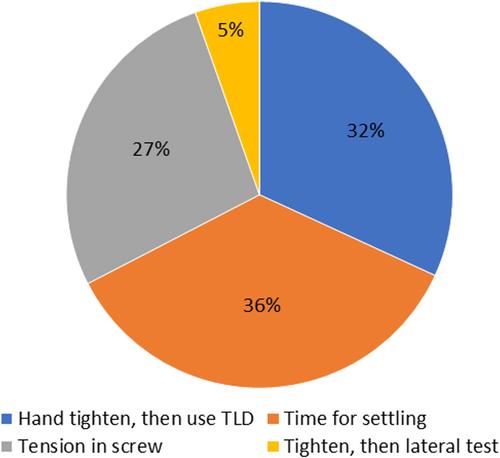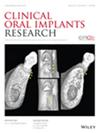A survey for the use of torque-limiting devices among dental clinicians in Europe
Abstract
Purpose
To assess how well torque-limiting devices (TLDs) are known and used by European dentists, and their adherence to screw tightening protocols and screw loosening occurrence through a survey, including the correlation between the dental specialty-of-interest and the recognition, the tightening protocol used, and between the calibration and the occurrence of screw loosening.
Materials and methods
A 10-question survey was distributed to dentists to collect data on their specialty-of-interest, TLD usage, knowledge on TLDs, calibration, the term “preload,” tightening speed, tightening protocols used, and occurrence of screw loosening. Pearson test was used for correlation analysis between the specialty-of-interest and the recognition-based questions, the tightening protocol used, and between the calibration and the frequency of screw loosening.
Results
Of 422 respondents, 24% calibrated their TLDs, 27% knew the term “preload,” 76% selected the correct location to read on TLDs, and 6% was aware of the effect of tightening speed. The correlation between the specialty-of-interest and the recognition-based questions was nonsignificant (p < .05) but was significant for used tightening protocol (p < .001). The correlation between the calibration and the occurrence of screw loosening was nonsignificant (p = 0.16). Tightening protocols' effect on screw loosening was similar, which was mostly observed less than once a year (p < .001).
Conclusions
A lack in dentists' knowledge was found on calibration, the term preload, and the effect of tightening speed, which were not impacted by the dentists' specialty-of-interest, which affected the preferred tightening protocol. The tightening protocol and calibration did not impact the occurrence of screw loosening, which was mostly observed less than once a year.


 求助内容:
求助内容: 应助结果提醒方式:
应助结果提醒方式:


